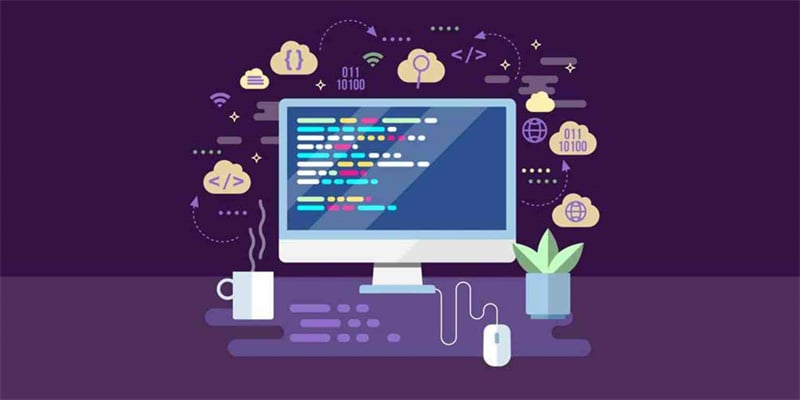Customer Advocacy Strategy: Different Types of Programs and Tips

The support of satisfied customers and their willingness to spread the good word can sometimes bring you more prospects than a masterfully crafted marketing campaign. It is all about trust.
Customer advocacy can help your business drive growth, brand and customer loyalty. By leveraging the enthusiasm of satisfied customers, customer advocacy strategies can help you create a network of advocates who willingly and passionately promote your products to others.
If you wish to know what a customer advocacy strategy is, how to create one that matches your business objectives, and which are the crucial customer advocacy programs, we advise you to stay with us.
What Is a Customer Advocacy Strategy?
A customer advocacy strategy is a comprehensive plan that demonstrates how a business will encourage its satisfied customers to promote its services or products. Its main goal is to convert customers into brand ambassadors who will gladly share their enthusiasm about the company with others and increase brand awareness.
Advocacy marketing strategy aims to increase customer retention and bulid customer loyalty by utilizing positive word-of-mouth marketing, which is still one of the most powerful ways for promoting your company.
The goal is to have a network of brand advocates who will recommend your product to others, provide testimonials and case studies, and spread a good word in their community.
What Is a Customer Advocacy Program?
Customer advocacy programs are designed to encourage satisfied customers to become businesses’s customer advocates. The main difference between the customer advocacy program vs advocacy strategy is that the strategy serves as a comprehensive guide towards customer advocacy, while the customer advocacy program is a part of the given strategy created to achieve a certain advocacy goal.
In case you wish to understand how to start an advocacy program, here are the most common types and customer advocacy program examples:
Types of Customer Advocacy Programs
Here are five programs for customer advocacy:
- Referral programs
- These programs encourage customers to refer new customers to a business.
- Example: Dropbox gives a great example of a successful customer advocacy program – it offers extra storage for those who refer family and friends to try out their services.
- Testimonial programs
- These programs encourage customers to share case studies or testimonials about their great experiences with a company.
- Example: HubSpot shows customer success stories on its website to demonstrate the value of its platform, which is surely one of the best client advocacy examples for showcasing the positive customer experience.
- Online communities
- Communities serve as hubs where customers connect with each other, share experiences, and provide customer feedback to businesses.
- Example: In Sephora’s community, customers can interact with each other and with the representatives to discuss beauty trends and products.
- Exclusive access programs
- These programs offer special privileges and benefits for future and present customer advocates.
- Example: American Express offers exclusive experiences and events for their cardholders as a reward for their advocacy.
- Customer advisory boards
- The given boards consist of customers who provide insight and customer feedback to help the companies get ideas and guidelines about their new products.
- Example: Salesforce meets regularly with their customer advisory board’s community, which provides valuable insight for product development teams. This is one of those advocacy program examples where companies get enormous help from their loyal customers.
Important Components of Customer Advocacy Strategy
We will instruct you on how to create a customer advocacy strategy in the following section, but before that, let’s go over crucial components you need to consider before creating the customer advocacy strategy:
- Customer-centric perspective
- Customer brand advocacy’s foundation lays in understanding your customers’ needs, pain, points, and preferences. This is how you can create personalized offerings and approaches that fit their unique needs.
- Top-notch services and products
- If you wish to convert loyal customers into passionate brand advocates, having a high-quality product is a must. Otherwise, it is quite impossible to expect any positive recommendations.
- Exceptional and personalized customer service
- Customer service is one of the most important aspects of customer experience and satisfaction. If customers’ issues are fixed quickly and their needs addressed in the same manner, their satisfaction level is automatically increased. Going the extra mile for customers is always greatly appreciated.
How to Create a Customer Advocacy Strategy?
To create successful brand advocacy programs that you can incorporate into a customer advocacy strategy, you must include several crucial steps that effectively engage customers and turn them into brand advocates. Let’s see a step-by-step guide:
Specify Goals
It is important to define your advocacy program goals that align with your business objectives, like generating good reviews or increasing customer referrals.
Segment Customers
Identify the most engaged and satisfied customers, perform customer segmentation to place them into cohorts, and create targeted customer advocacy marketing campaigns. With customer success platforms like Akita, you can perform customer segmentation easily based on any attribute, share comprehensive data with the entire team live, and much more.
Engage with Advocates
Provide exclusive offers and opportunities to provide feedback, and use personalized communication tools. It is crucial for advocates to participate in advocacy activities with no issues and complications.
Offer Rewards for Advocacy
Offer discounts, recognition within the community, and exclusive offers to events or products. Make sure that the rewards resonate with advocates’ unique requirements.
Implement Client Advocacy Programs
Create and implement an advocacy program that we mentioned before – referral, testimonials, and boards—to facilitate the activities and engagement among your brand advocates. Use the advocacy program examples that already exist as a starting point.
Track the Right Metrics
Evaluate the effectiveness of your customer advocacy strategies by tracking and measuring the right metrics like customer satisfaction scores, referral rates, and engagement levels.
Collect Customer Feedback
Solicit and act upon the feedback from advocates; and make necessary adjustments to your strategies based on the insights.
Customer Advocacy Strategy: Tips for Implementation
We showed you a step-by-step guide for creating an effective customer advocacy strategy, but sometimes it is useful to know some insider customer advocacy best practices and tips, as they can serve as a final touch for your strategy.
The first thing that isn’t hard to do is to offer early access to new products. Another way that doesn’t require much is inviting loyal customers to meet the team that stands behind your company.
Also, you can encourage brand advocates to promote your product by posting content on social media.
A way that you can greatly benefit from this is by asking for feedback regularly with the aim of detecting problems that you were not aware of. Appreciate every effort your brand advocates make to promote your business.
Lastly, give your brand advocates credit when using their insights and ideas to solve a particular problem or improve the product in any way.
Conclusion
A well-designed and implemented customer advocacy strategy is a powerful way for creating brand awareness, building brand loyalty, and improving customer retention and satisfaction.
If we consider the fact that all the mentioned aspects are essential for business growth, sustainability, and success, investing time and effort into creating effective advocacy strategies is more than necessary.
Use Akita to gain valuable insights into your customer base and create effective strategies.
Frequently Asked Questions
How do you build customer advocacy?
By building solid and respectful relationships with your customers and providing an impeccable customer experience every day, you can encourage them to advocate for you.
What is the advocacy marketing strategy?
Advocacy marketing is a strategy that aims to leverage happy customers to promote services, brands, or products.
What is customer advocacy?
Customer advocacy is a strategy that aims to transform loyal customers into brand advocates. Customer advocates are satisfied customers who are willing to promote your brand, products, or services on social media, by providing you with positive customer feedback, and to people around them.








